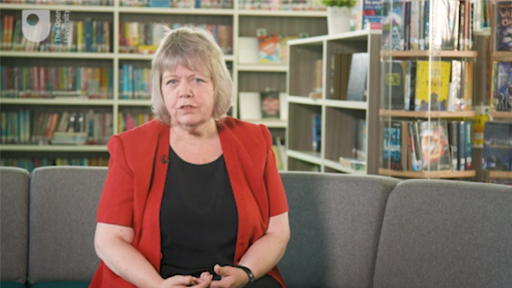2 Managing digital resources
IT provision and the availability of digital resources are central to the functioning of a modern school library. Although some resources may be free (open source), the majority will incur a fee or be subject to an annual subscription. It’s important, therefore, to be aware of renewal dates for digital resources and to consider how often they are used. For example, if a digital resource is hardly or never used, you may find it a better use of funds to invest in a different resource rather than renewing the license for one that is not needed.
Licenses may either have a fixed price or be calculated on the number of students in your school. If you are a long-term customer or if you are purchasing more than one resource from the same provider, you will be in a stronger position to negotiate a discount. You may also wish to use a consortium service such as JCS Online Resources [Tip: hold Ctrl and click a link to open it in a new tab. (Hide tip)] where you can get a discount by encouraging other schools in your area to purchase the same product. It is vital to make your databases as accessible as possible on the school network. However, it is also essential that you ensure the method by which the resources are accessed and used comply with the terms and conditions of your license.

It is usual for digital resources to be accessed by staff and students in more than one way, for example through your school’s intranet, Virtual Learning Environment (VLE), Learning Management System (LMS), or via the Internet. Since the intranet and VLE are secure environments, which require users to login before viewing them, it is possible for students to access the resources you subscribe to without a password using a weblink known as a referring URL. Some LMSs also require users to login in order to view their catalogue, thereby allowing the use of referring URLs. However, most are OPAC: Online Public Access Catalogues. These allow guests to browse the LMS database without logging in. In these instances, as with access to other publicly available sites such as your school website, staff and students would need to be supplied with log-in details for digital resources in order to prevent members of the public gaining unauthorised access to them. Your IT department should be able to help you with this, but having an awareness of how these resources are accessed is essential to comply with the terms and conditions of the license.
To think further about this topic, watch the video below where Sarah discusses various digital resources school libraries can subscribe to, the procurement process, and explains how to implement them.

Transcript: Video 2
Now complete Activity 2 to reflect on your current digital provision and its accessibility. As Sarah commented, making sure databases and resources are visible and accessible is crucial.
Activity 2
In the table below, provide three examples of digital resources you subscribe or signpost to, and indicate how you access them.
| Digital resource | How it's accessed |
|---|---|
| Example: Local, public library catalogue | A link on the LMS Homepage |
Comment
Now that you have completed this activity,you should be familiar with the resources in your collection and the ways they are accessed (for instance, via your LMS homepage, the intranet, or shared file areas such as your school’s VLE). If you reflect on these resources, can you spot any patterns such as an overemphasis on a specific subject area? If so, you may wish to think about whether you need to invest in others areas. Similarly, if you have several paid resources but not any free ones, it may be helpful to consider other open-source resources available to you. By reflecting on your digital resources in these ways, you can ensure that your digital collection is as good as it possibly can be.
In general, digital resources encourage inclusivity, as they allow students to view resources in different formats, for example, by providing the option to change type size, language, or even have the content read aloud or relayed by screen reading software, which can be installed on the computers in your library or on individual student’s devices. Digital resources, such as online picture folders, audiobooks and databases, also have the benefit of offering flexibility for independent research and study, and can aid and assist with remote learning. For this reason, it’s important that both staff and students are aware of how to use and access different databases and resources. In the next activity you will think further about how your own digital resources support remote learning.
Activity 3
In the box below, list some digital resources your library provides that support remote learning.
Discussion
Demand for digital resources is increasingly driven by the number of devices students have at home and the ease with which they can access the internet remotely. One benefit of this is that students increasingly have the capability to learn remotely to an extent that was not previously possible. The use of digital resources to support learning in this way is, therefore, a growth area which is being driven by stakeholder demand. This has coincided with a shift in the educational sector towards a greater emphasis on blended learning, a hybrid form of teaching which combines traditional classroom learning with the use of digital resources and independent study. Consequently, it is of particular value to consider – as you have done in this activity– how your digital resources support remote learning and how you can make improvements in the future. It might be helpful, therefore, to reflect on what your choices say about the composition of your digital resources provision. If, for example, you don’t have many resources that support remote learning, you might wish to consider how you can improve your provision in the future. Similarly, if your digital resources cater to certain stakeholders but not others, you may conclude that there is more that you could be doing to support them moving forward. Considering your answers in these ways can, therefore, help you identify areas for further investment and highlight ways you can improve your collection. You might consider including the conclusions you draw in your library development plan.
Now that you have learned about the management of digital resources and considered their key role in supporting remote learning, in the next section you will explore how social media and blogs can be used in different ways to engage with a range of library stakeholders and help promote your library, literacy, and reading.
